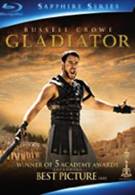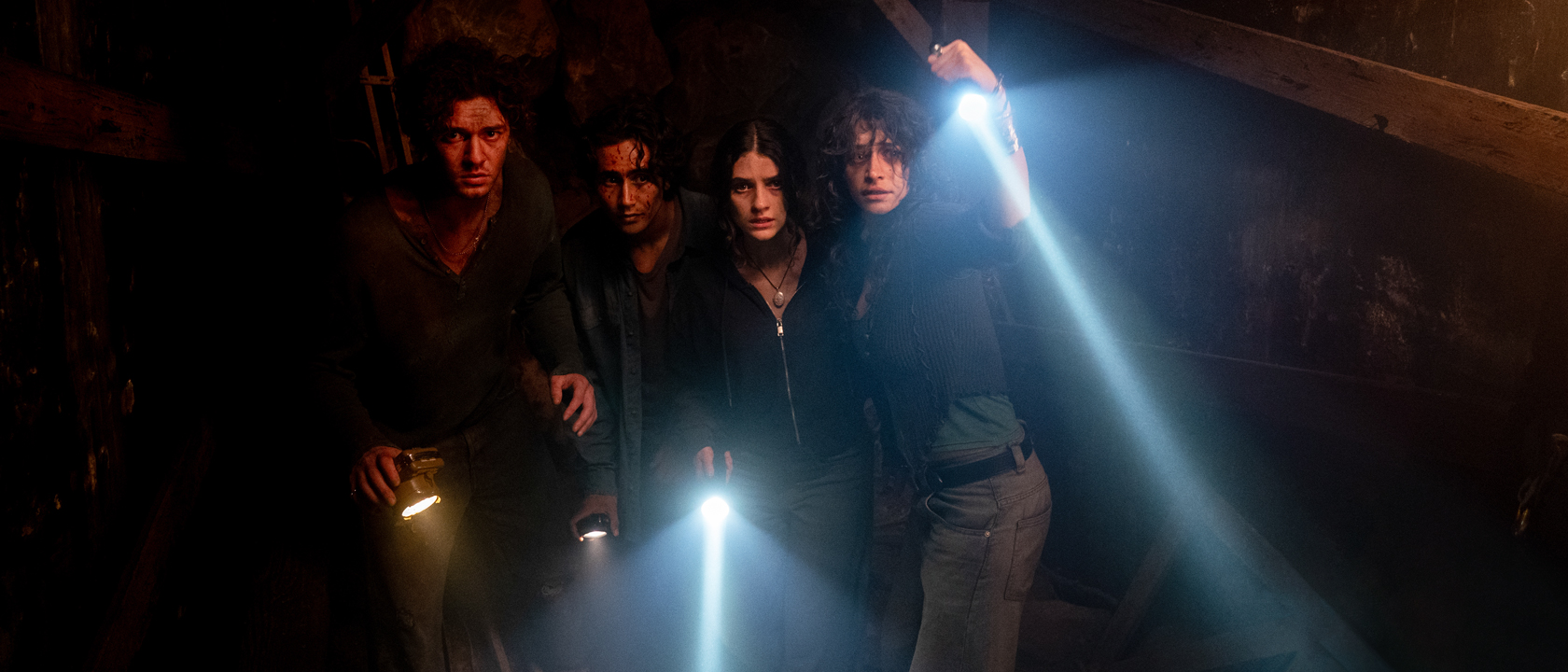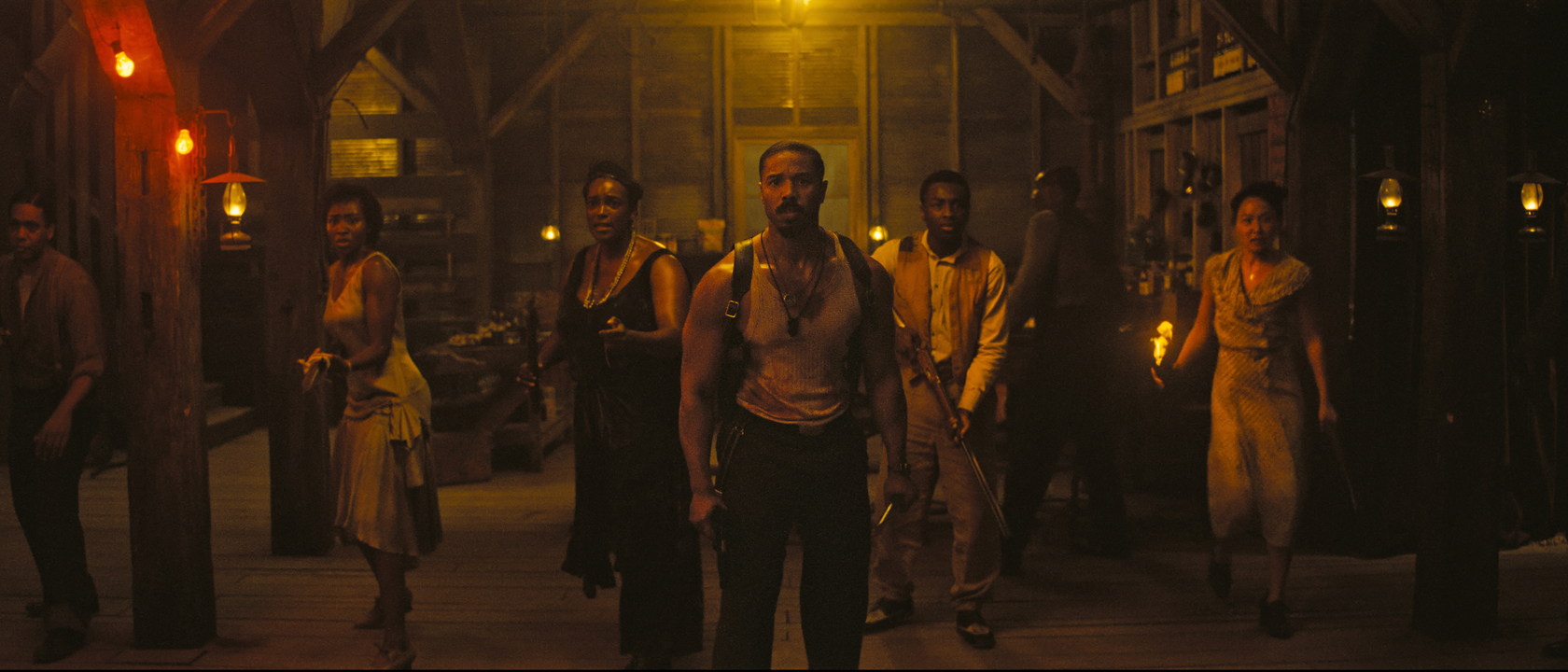If the true test of a classic is the test of time, then Gladiator still has a ways to go. In all other requirements of filmmaking, however, it meets or exceeds the bar. Next year the movie will celebrate its 10-year anniversary. That might have marked the ideal time to re-release the movie on Blu-ray (and no doubt Paramount/Dreamworks will milk that cow when the time comes), but there are few movies worthy of the title of visual tour de force, and they don’t need an excuse to be presented in the best possible fashion. The ideal would be watching the movie in the theater again; short of that opportunity, seeing it in the richness of this high-def version is a superb cinematic experience. In the 1950s the Roman epic was a cinematic staple. Ben Hur, Quo Vadis, Spartacus…they were some of Hollywood’s biggest successes, featuring great performances and earning piles of awards. Then, for 40 years, the genre virtually disappeared from the screen.
In 2000 Ridley Scott resurrected ancient Rome in the most glorious rendering to date, taking advantage of advances in computer-generated graphics and an interest in epic warrior films that Braveheart had rekindled just a few years before. Many movies after Gladiator tried and failed to create that same level of historic, epic storytelling, including another by Scott himself, but none have managed to match or top it. Given the hardships involved with making the movie, it’s amazing it even made it to theaters, much less to the top of the Oscar heap.
The story centers on Maximus (Russell Crowe), an outcast Roman general who fights across two continents to avenge the deaths of his family and his friend and lord, Caesar Marcus Aurelius (Richard Harris), all murdered by Marcus’ son, Commodus (Joaquin Phoenix). That much you probably know. What few people are aware of is the battle that raged across three continents between the filmmakers as they struggled to finish the script while filming on the movie was already underway.
To call it a collaboration would be an oversimplification of the journey Gladiator made; film-making by committee is the better description. Script re-writes sent by fax between filming locations and the studio in the US were a daily event. Characters were expanded and eliminated while entire plot lines were added and removed. That sort of process usually results in a miserable movie, but in this case the passion of the talented actors, writers, producers, and, most importantly, a focused director, forged magnificence.
While Scott’s direction was at the heart of the film’s triumph, he credited his tireless crew and cast with much of the film’s success, in particular his lead. Crowe’s character, the farmer-turned-general-turned-slave -turned-gladiator-turned-savior of Rome, is another bit of fiction carved loosely out of history. The multi-faceted Maximus is a dramatically lean role, but Crowe feasts on every morsel of it, generating a character worthy of the Oscar he won for playing him. The biggest hit the movie took during filming was the death of Oliver Reed, the renowned actor who took on the role of Proximo, Maximus’ gladiator mentor. Instead of replacing and reshooting his entire character, the few scenes he had left were completed through body doubles and digital wizardry, allowing his final role to be one of the finest of his career.
Pity the high school student (or their history teacher) who uses this movie as a reference. It takes generous liberties with the historical nature of its characters, events, and settings, but while truth is sometimes stranger than fiction, fiction is usually more inspiring. Richard Harris, who would only live to play a handful more roles, crafts a brilliant and conflicted version of the real Caesar Marcus Aurelius, and Joaquin Phoenix’s Oscar nomination for Caesar’s disturbed son Commodus was well deserved.
Technical achievements in visual effects have grown by leaps and bounds in the last nine years, but there’s very little they could offer to the movie except a flashier look and a bloated budget. The effects of some movies show with time, but Gladiatorstill looks amazing, the result of rich but gritty artistry, brutal fight choreography, and inventive imagination. Battle scenes in particular bear Scott’s characteristic stylized camera shots that some might claim could be done better with more computer effects, but they’d generally be wrong. Instead of losing itself in its special effects or wild battles, Gladiator does what a good story should and keeps the intrigue-filled story and complex characters center stage.
For all its troubles behind the camera, Gladiator emerged a masterpiece that stands the test of time. All that’s left is to pull it out again, from time to time, to be reminded what epic movie-making can be, and wait to see if someone who follows can do the genre justice again. Gladiator’s transfer to high-def Blu-ray doesn’t come with a whole lot of new bonus material. In fact, this Sapphire Collection edition generally contains what you could have gotten on any of the previous releases, with a few extra tidbits all rolled into one. That includes your choice of watching the original 2000 release or the 2005 extended edition (which was basically the original version with the deleted scenes rolled back in). What is new is the functionality that your Blu-ray player can offer, and the disc set takes advantage of it to the point of annoyance.
After you’ve decided which version of the movie to watch (and there’s really not much reason to watch the shorter version, as Scott admits he pulled most of the scenes for time and pacing, not content), you’ll have the option of whether to listen with or without commentary. The theatrical version comes with the original track of director Ridley Scott discussing the movie solo. Interesting, but not amazing. The extended version features a dialogue commentary between Crowe and Scott, which is less informative but far more entertaining.
As a final, in-movie enhancement, the disc has segments from the various bonus materials broken out into what it calls the “Scrolls of Knowledge.” During the movie, three windows consume most of the viewing screen. Within these windows, factoids appear and the titles of certain clips or segments are highlighted, which you can then actively select to view. If you choose to click, the movie pauses, you switch over to the bonus bit, watch the few minutes’ worth of material, and then automatically jump back to where you left off. It’s great if you’re four years old and lack the focus to actually watch a movie straight through; otherwise it’s a waste of effort. Besides, the windows consume so much of the viewing area that you might as well not be watching the movie in the first place. All of the material from the “Scrolls of Knowledge” can be watched separately. You can even queue up a list of the segments you’re interested in and have them played together. There’s little reason to interrupt the movie-watching experience with a constant barrage of Trivial Pursuit fodder.
If you’d rather watch the bonus materials in their original featurette groups and order (an alternative I highly recommend), you can skip the “Scrolls of Knowledge” and go straight to “Visions from Elysium,” the package’s fancy title for “Extras.” The keystone to this comprehensive collection is “Strength and Honor: Creating the World of Gladiator.” With just as much drama and only slightly less blood than the movie itself, this 3+ hour-long documentary walks you through seven key stages of the film’s development, from the embattled writing process to the movie’s release. One of the seven sections is a lovely homage to Oliver Reed, whose death during filming resulted in some very imaginative efforts to finish his performance digitally so he wouldn’t have to be replaced completely.
If you’re really feeling like going in deep, you’ll find the extras section packed with lots of other goodies, like a documentary on the history of gladiators, some additional featurettes on how the film was made, plenty of image galleries, and even extra deleted scenes. The menus and submenus get a little confusing. The disc gets no bonus points for ease of use, but it’s nice to have everything together in one spot.
True Blu-ray addicts have been raising cain around the internet about the cruddy nature of the transfer to 1080p high-def. Apparently it’s been over-filtered, over-processed, and looks extremely stylized. Frankly, I’m not sure how much of that was a result of digital transfer touch-up overkill and how much of it is the digital tooling Ridley performed for the film, and we’ve just never had a version this detailed to be able to notice. If you have a big enough screen and a testy enough eye for pixel-to-pixel detail for the tinkering to bother you, I could really care less. I thought it was gorgeous in high-def on a 50” screen, filters and all, and was all too happy to watch it the multiple times needed to take in all the extras.
I Thought Elsbeth's Bloody Judge Crawford Twist Had To Be A Fake Out, But Now I Have Questions For The Season 2 Finale
A24’s The Legend Of Ochi Hired A YouTuber Making Bird Sounds In His Basement To Work On The Movie, And I'm Wowed By The Whole Process
Charli XCX Is Not Going To Be In Greta Gerwig's Narnia Movie After All, But I'm Psyched That We're Still Getting A Barbie Reunion Thanks To New Casting











